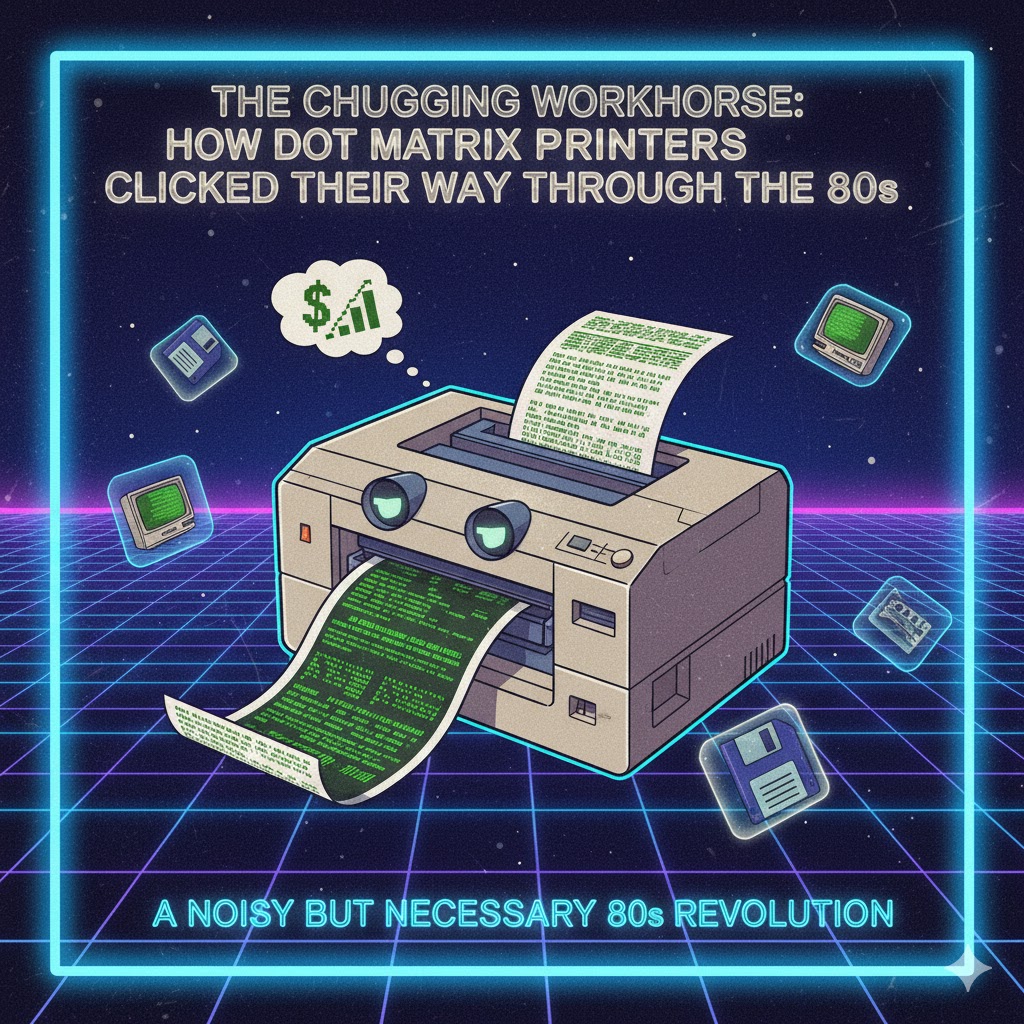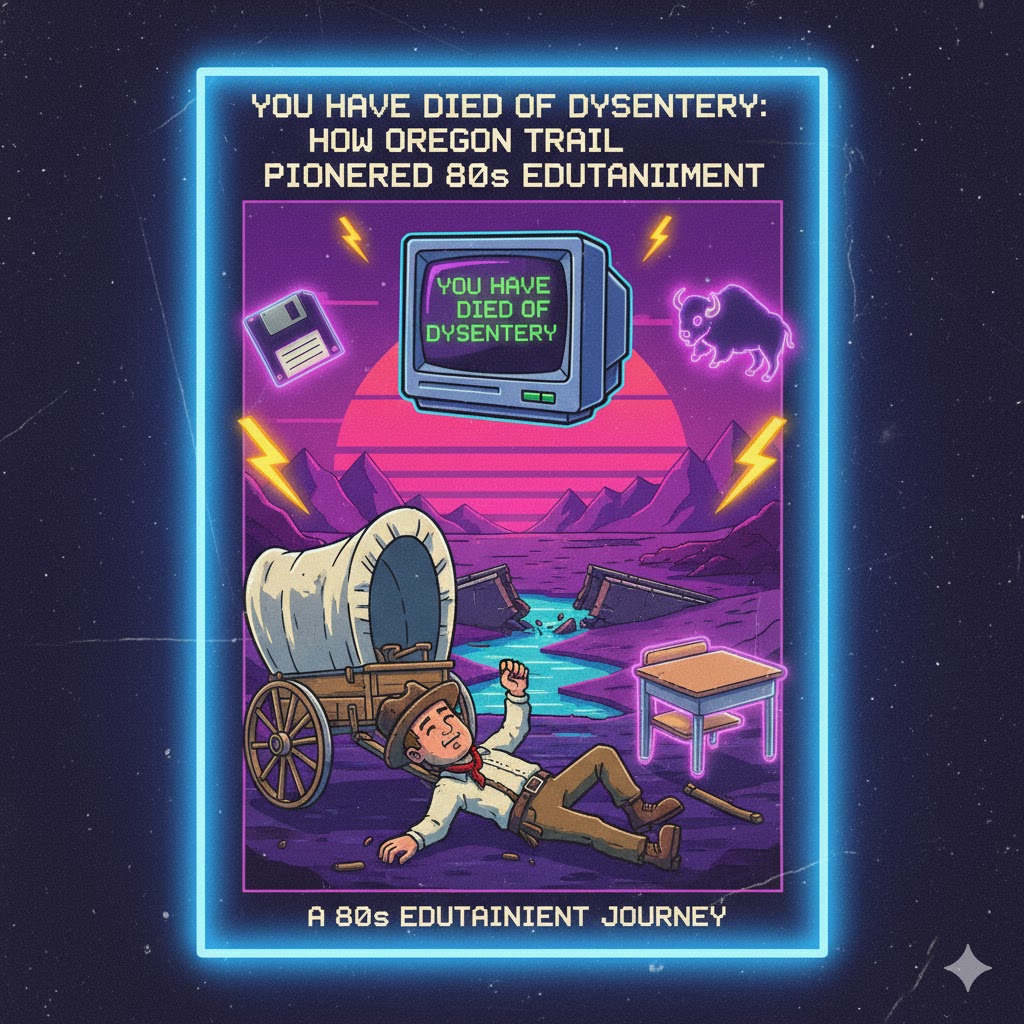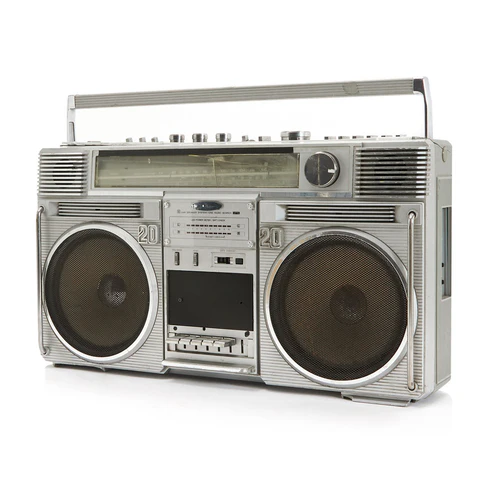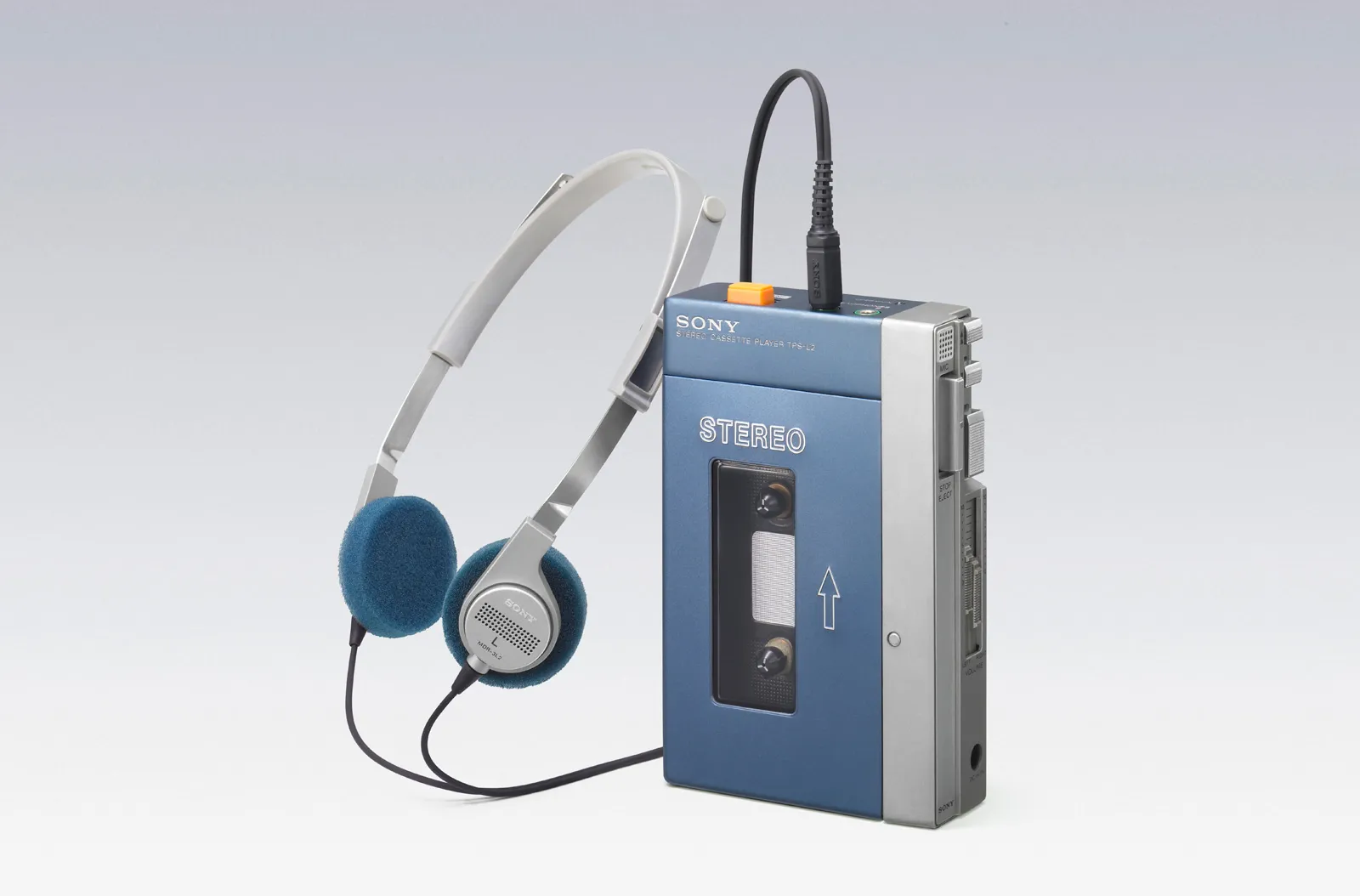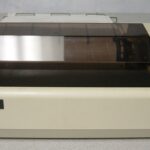 The buzzing, clattering sound of a dot matrix printer is instantly recognizable to anyone who lived through the 1980s. More than a piece of office machinery, the dot matrix printer became a symbol of the early personal computing revolution, bridging the gap between innovation and everyday life. Its impact on 1980s pop culture extended beyond workspaces, classrooms, and hobbyist dens—dot matrix printers helped define the look, feel, and sound of a generation embracing the possibilities of digital technology. From gaming to home computing, from offices to school labs, these printers were central to the experience of interacting with computers during a decade of unprecedented technological growth.
The buzzing, clattering sound of a dot matrix printer is instantly recognizable to anyone who lived through the 1980s. More than a piece of office machinery, the dot matrix printer became a symbol of the early personal computing revolution, bridging the gap between innovation and everyday life. Its impact on 1980s pop culture extended beyond workspaces, classrooms, and hobbyist dens—dot matrix printers helped define the look, feel, and sound of a generation embracing the possibilities of digital technology. From gaming to home computing, from offices to school labs, these printers were central to the experience of interacting with computers during a decade of unprecedented technological growth.
Dot matrix printers emerged from the early evolution of printing technology, offering a solution that was both cost-effective and compatible with the home computer revolution. Unlike the smooth output of modern inkjets or lasers, dot matrix printers created images and text through the rapid impact of pins striking an inked ribbon, producing patterns of dots that formed letters, numbers, and graphics. This mechanical approach produced the distinctive buzzing and clicking that became synonymous with computing itself in the 1980s. Users quickly associated the sound of a dot matrix printer with productivity, creativity, and the growing power of personal technology.
One of the most significant ways dot matrix printers influenced 1980s pop culture was through the home computer boom. Systems such as the Commodore 64, Apple II, and IBM PC became increasingly popular, but part of the computing experience relied on the ability to output information in tangible form. Dot matrix printers allowed users to print homework, letters, invoices, and even rudimentary graphics, bringing digital creation into the physical world. For kids, students, and hobbyists, the ability to see their typed words or pixelated designs on paper was a revolutionary experience, blending technological empowerment with a sense of accomplishment. Dot matrix printers turned abstract computer commands into visible, touchable results, fostering a sense of engagement and ownership over emerging digital tools.
Gaming also intersected with dot matrix printing in ways that contributed to 1980s nostalgia. Many early computer games offered the ability to print high scores, maps, or achievements on dot matrix printers. Popular titles like Oregon Trail, The Print Shop, and early simulation games encouraged players to create posters, certificates, or custom content using the printer. This interactivity blurred the lines between digital entertainment and physical creativity, allowing players to celebrate in-game accomplishments in the real world. The tactile feedback of paper sliding through the printer, combined with the mechanical sounds, created a multisensory gaming experience that was unique to the era and deeply tied to the cultural identity of early computer users.
Offices and schools played a central role in embedding dot matrix printers into daily life and pop culture. Typing classes, computer labs, and administrative tasks relied heavily on these printers, making their sounds and output a routine part of everyday activity. The rhythmic clicking and whirring became the soundtrack of productivity, while continuous feed paper and perforated edges became visual cues that defined the era. Many children’s first experiences with printed documents came from school projects or assignments generated by dot matrix printers, linking educational development with the sensory experience of the technology. This association between learning, creativity, and mechanical output helped cement dot matrix printers as cultural icons of the decade.
The aesthetic and mechanical characteristics of dot matrix printers also contributed to their cultural significance. Their industrial, boxy designs, punctuated by rows of lights, paper feeds, and ribbon cartridges, were immediately recognizable. The printers themselves became symbols of technological possibility—tangible evidence that personal computing was not just a futuristic concept, but a present-day reality. Owning or interacting with a dot matrix printer signified access to a new form of creative and professional expression, reinforcing the cultural perception of computers as tools for empowerment and innovation.
Dot matrix printers were also instrumental in the rise of desktop publishing and DIY creativity during the 1980s. Programs like The Print Shop enabled users to create greeting cards, banners, and newsletters, which could then be printed directly from a home computer. The combination of user-friendly software and the dot matrix printer’s ability to translate digital designs into paper-based artifacts fueled a wave of creative experimentation. Children, students, and hobbyists could now produce visually impressive projects without relying on professional printing services, democratizing access to tools for artistic and informational expression. The mechanical noise and aesthetic of the printed output became inseparable from the creative culture of the era.
Pop culture references to dot matrix printers began appearing in movies, television shows, and magazines as the decade progressed. The distinctive sound of the printer was often used as an auditory shorthand for computing, innovation, or office work. Characters typing furiously at home computers, printing out documents, or creating posters were almost always accompanied by the rhythmic buzzing of a dot matrix printer. This recurring presence reinforced the printer’s role as a cultural symbol, making it an instantly recognizable element of the 1980s technological landscape. It represented productivity, capability, and the growing integration of technology into everyday life.
Beyond its functional and aesthetic contributions, the dot matrix printer also influenced the development of digital art and pixel-based creativity. Because the printer rendered images using dots, users had to think in terms of patterns and pixels, translating digital design into a tangible form that adhered to the printer’s limitations. Early computer enthusiasts experimented with ASCII art, simple graphics, and text-based designs, learning to manipulate dots to create recognizable shapes and illustrations. This practice fostered a unique form of creative expression that combined technological understanding with artistic sensibility, bridging disciplines and inspiring a generation to explore the intersection of computation and design.
The sound of dot matrix printers became a cultural icon in its own right. The combination of pins striking a ribbon, paper feeding, and motor hums created a multisensory experience that was uniquely 1980s. Whether in the home, school, or office, the mechanical noises signaled productivity, creativity, and technological engagement. For many, the whirring and clattering evoke nostalgia for a time when the digital world was emerging, tangible, and mechanically expressive. The audio footprint of dot matrix printers became as recognizable as the visuals of neon fashion, VHS tapes, and arcade cabinets, embedding itself in the collective memory of the decade.
Dot matrix printers also played a role in shaping social behaviors and collaboration during the 1980s. In schools and computer clubs, children and teenagers often shared access to printers, exchanging tips for formatting, maximizing print quality, and creating visually appealing documents. The printer became a communal resource, fostering collaboration, teaching problem-solving, and encouraging innovation. This social dimension extended to families, where parents and children could experiment together on personal projects, school assignments, or hobbies, turning dot matrix printing into both a practical and cultural activity.
Corporate and hobbyist communities both embraced dot matrix printers for their reliability, versatility, and affordability. Businesses used them for invoices, memos, and reports, while hobbyists leveraged them for newsletters, creative projects, and even early forms of digital art. The combination of professional and personal application contributed to the ubiquity of dot matrix printers in the 1980s, ensuring that nearly everyone experienced the distinctive blend of mechanical precision, creative potential, and auditory spectacle. The printer became a bridge between the emerging digital economy and everyday life, symbolizing the democratization of technology.
Dot matrix printers also contributed indirectly to pop culture through their integration with early computer-generated music, sound design, and coding. Hobbyists and enthusiasts experimented with programming outputs, generating patterns, text, and images that could be printed, blending logical thinking, artistic design, and mechanical interaction. The printer’s limitations—resolution, speed, and monochromatic output—spurred creativity, challenging users to adapt designs to fit technical constraints. This problem-solving process influenced early digital literacy and fostered an appreciation for the intersection of technology, art, and culture that shaped the ethos of the 1980s computing generation.
The visual experience of dot matrix printing was equally influential. Continuous feed paper with perforated edges and pin-feed holes became immediately recognizable symbols of the digital era. The aesthetic of rows of dots forming letters, graphics, or charts provided a unique tactile and visual experience that contrasted sharply with modern inkjet or laser printers. This mechanical, pixelated style contributed to the emerging “digital aesthetic” of the 1980s, influencing design trends, graphics, and even the look of arcade games, early software, and home-computer media. The patterns produced by dot matrix printers became a visual shorthand for computing itself, embedding the technology into the era’s visual culture.
Ultimately, dot matrix printers left a lasting legacy on 1980s pop culture by merging technology, creativity, and social experience. They were not merely functional devices but tools of empowerment, enabling individuals to translate digital ideas into tangible forms. The mechanical sounds, tactile output, and visual style created a multisensory experience that defined early interactions with personal computers. Whether printing homework, newsletters, ASCII art, or game achievements, the dot matrix printer became a central component of everyday life, shaping how people engaged with technology and influencing broader cultural trends.
By providing a tangible link between digital and physical media, dot matrix printers contributed to the perception of computers as accessible, creative, and transformative tools. They fostered innovation, collaboration, and play while establishing a distinct auditory and visual identity that became emblematic of the decade. The printers’ influence extended across classrooms, offices, homes, and media, embedding them into the social and cultural fabric of the 1980s.
For anyone who remembers the rhythmic clatter, the faint smell of ink ribbons, and the sight of perforated paper emerging row by row, dot matrix printers remain more than technological artifacts—they are emblems of a transformative era. They represent the excitement of discovering computing, the thrill of creative experimentation, and the emergence of a digital culture that shaped work, play, and imagination. The impact of dot matrix printers on 1980s pop culture endures because they were at once practical, inventive, and emblematic of a decade defined by exploration, technological optimism, and mechanical charm.
The legacy of dot matrix printers reminds us that cultural icons are not always flashy or glamorous; sometimes, they hum quietly in offices, schools, and homes, their influence measured in clicks, clacks, and the thrill of seeing an idea materialize on paper. Dot matrix printers were, and remain, the mechanical pulse of the 1980s digital revolution—an audible, visible, and tactile reminder that the decade’s spirit of creativity and innovation could be experienced not just on screens, but on paper, one dot at a time.
